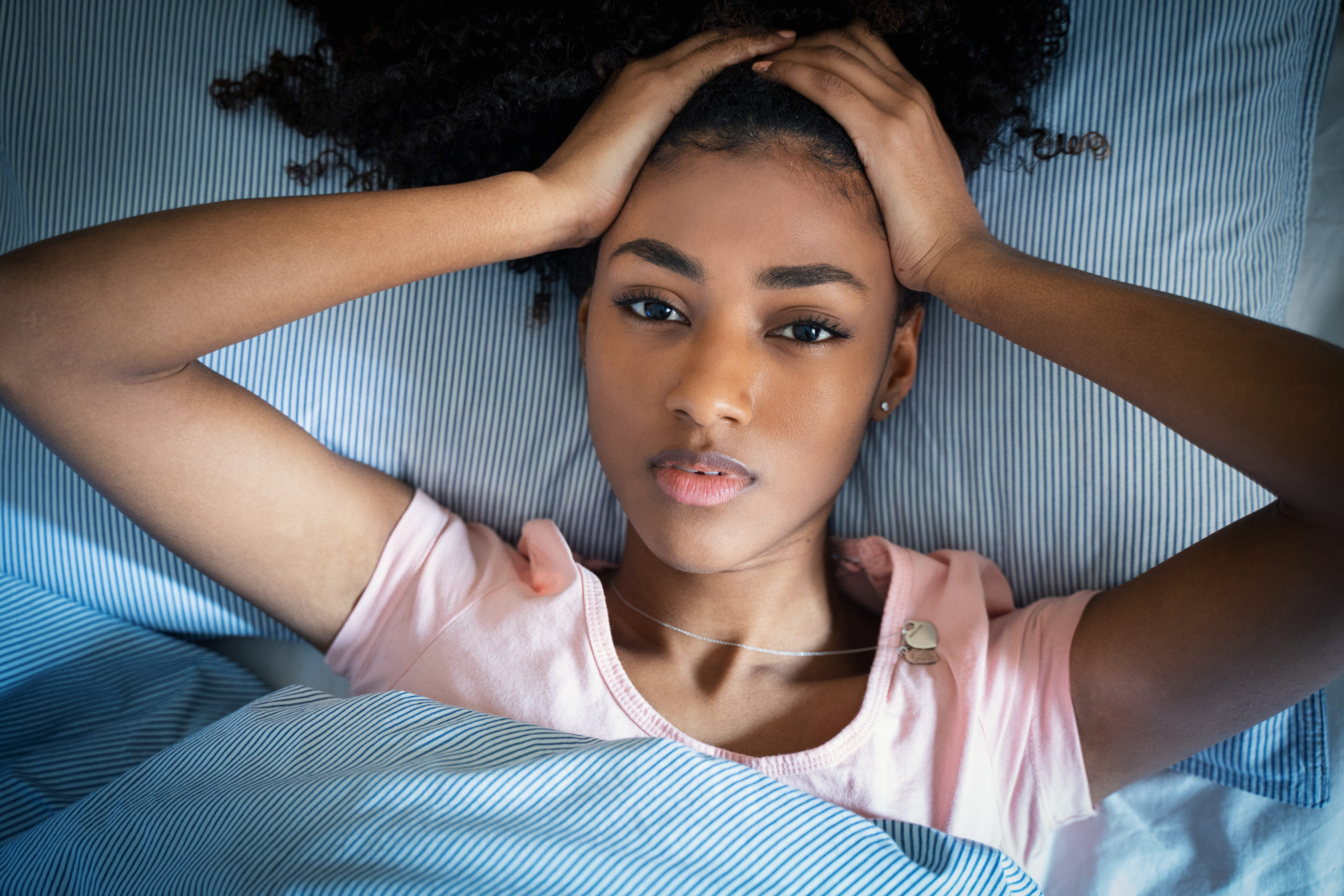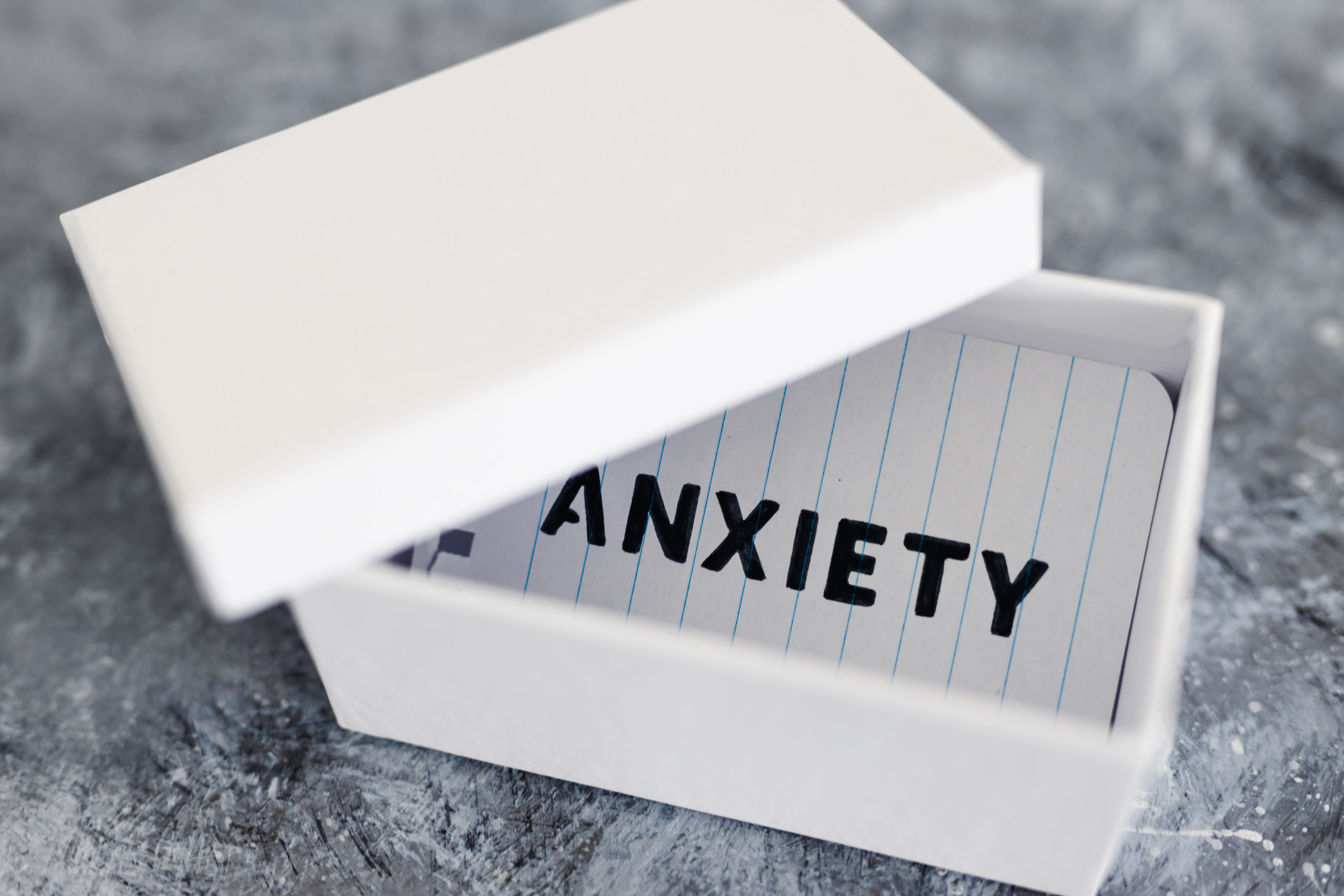Introduction
Every one of us feels anxious and apprehensive now and then. Anxiety is a normal human emotion. It is how your brain reacts to any stress, uncertainties, and potential threats ahead.
For an instant, you worry when you face a problem at work or before making any important life-altering decision.
A little bit of worry and anxiety can motivate you to work harder towards your goals and help you achieve success.
However, when you feel ongoing and uncontrollable worry and anxiety even in the absence of stressors, that’s when it becomes problematic.

Stress vs. Anxiety
Stress and anxiety are two different animals, although their symptoms overlap.
Stress happens from obvious and identifiable life stressors such as work, relationships, kids, financial difficulties, and other notable factors.
Stress is also temporary and goes away when the stressful situation is resolved.
On the other hand, the cause of anxiety is not always identifiable. It is an ongoing, excessive, and persistent worry about life circumstances even in the absence of stressors.
What is General Anxiety Disorder (GAD)-
Anxiety disorders are the most common mental illness in the United States, affecting approximately 40 million American adults every year.
When a person has General Anxiety Disorder, their worry rarely stops but is ongoing, persistent, and lasts at least 6 months.
Generalized anxiety disorder causes anxiety of various events such as health, work, money, relationships, school, and social life. People with GAD are thought to be neurotic or worrywarts.
These feelings of worry and anxiety are tough to control and often interfere with daily routine-based activities.
Types of Anxiety Disorders
Did you know that are different types of anxiety?
Generalized Anxiety Disorder is not the only kind of anxiety. There are various types of anxiety that cause worry and stress in more specific areas of your life.
Generalized anxiety disorder:
Causes you to worry about everything (last at least 6 months to be diagnosed).
Separation Anxiety Disorder:
Difficulty being away from home or attachment figure, (must be present 4 weeks in children and 6 months in adults).
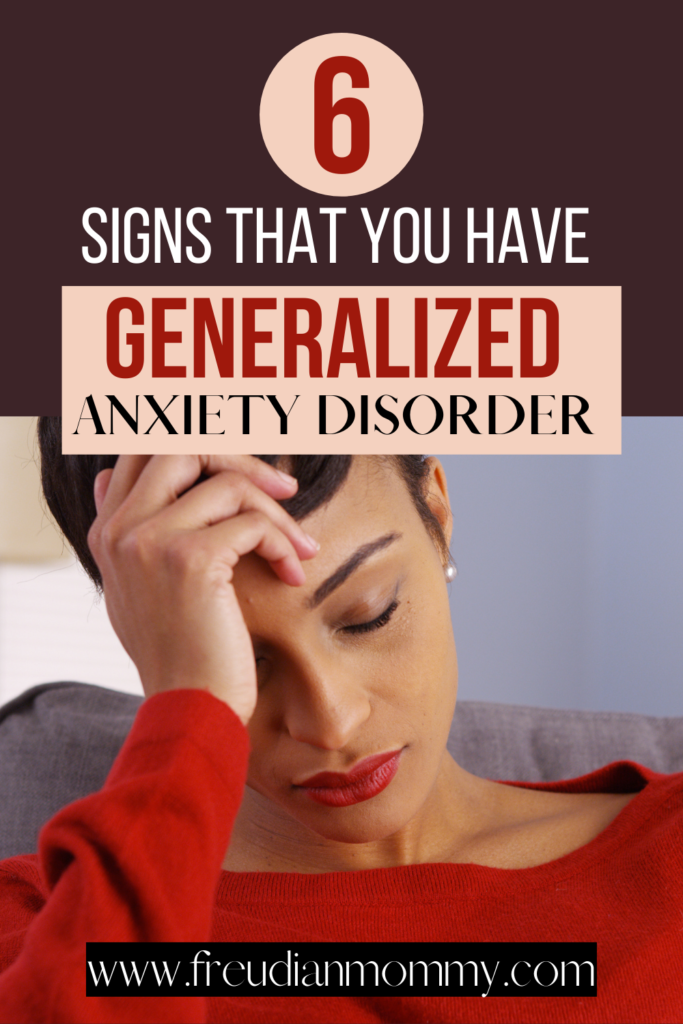
Selective Mutism:
Causes fear in social situations to the point of not being able to speak (1 month minimum).
Specific Phobias:
Causes excessive fear of a particular object or situation, such as heights, flying, or spiders.
Social Anxiety also known as Social Phobia
Fear of being negatively judged or evaluated in a social setting.
An individual may experience an intense fear of being embarrassed, criticized, and humiliated in daily routine situations such as:
• Making small talk
• Eating in public
• Speaking publicly
Panic disorder
Fear of having a future panic attack after experiencing a panic attack.
Agoraphobia
Fear of being in a situation where you may not be able to get away, such as an elevator.
Common Signs and symptoms of Generalized Anxiety Disorder include:
Although these symptoms can be attributed to the different types of anxiety disorders, below are some of the most common signs and symptoms of Generalized Anxiety Disorder.
- Severe feelings of anxiety or worry that happen most days of the week for at least 6 months
2. Inability to control your worry and anxiety
3. Three or more of the following symptoms must be present for most days of the week for the past 6 months (only 1 of these symptoms needs to be present for children)
- Restlessness
- Difficulty concentrating or trouble with thinking
- Irritability
- Muscle tension (e.g., trembling, twitching, feeling shaky, and muscle aches and soreness)
- Fatigue
- Trouble sleeping (falling or staying asleep)
4. The anxiety is not due to a medical condition or substance use
5. The anxiety is not due to another mental illness.
6. The anxiety affects you socially, relationally, occupationally, or educationally
Other features of Generalized Anxiety Disorder
- Sweating
- increased heartrate
- numbness or tingling in hands or feet
- shortness of breath
- Nausea or diarrhea
- Dizziness
- Dry mouth
- inability to relax
- Indecisiveness
- Overthinking
- Seeing situations as threatening even when they are not
- mind going blank
- Having a sense that something bad is going to happen
3 Facts about Generalized Anxiety Disorder:
- Generalized anxiety disorder can occur with panic attacks.
2. Anxiety is a risk factor for sleep disorders such as insomnia.
3. Medical conditions such as heart and thyroid conditions can cause signs and symptoms similar to anxiety disorder. It is important to have a complete physical exam to rule out any medical conditions when consulting your medical health professional about your anxiety.
The onset of generalized anxiety disorder
GAD may start at any age in life; however, the average age of onset is 30 years old.
What Causes Generalized Anxiety Disorder (GAD)
A) Genetics:
Research has shown an increased risk for individuals with first-degree blood relatives (parents and siblings) with anxiety or depressive disorders for developing GAD.
B) Negative life events:
Adverse and stressful events increase the risk of developing anxiety. Events such as financial problems, being divorced or widowed, relationship difficulties, health, and work issues cause an individual to develop anxiety or worsen existing anxiety symptoms.
C) Adverse Childhood Experiences:
Physical, emotional, and negligence during childhood are linked to Generalized Anxiety Disorder.
D) History of mental illness:
A correlation has been found between GAD and other psychiatric disorders such as panic disorder, depression, and specific phobia.
E) Gender:
Women are diagnosed with anxiety roughly twice as often as men.
D) Temperament:
People who withdraw or avoid unfamiliar situations are at a higher risk for developing GAD.
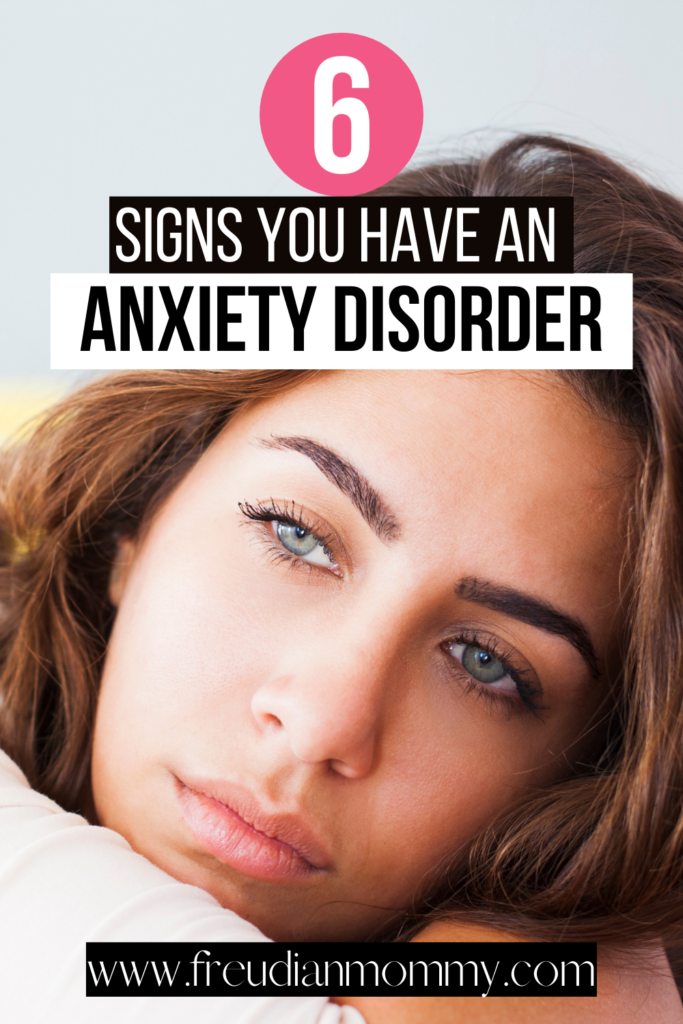
Treatment for Generalized Anxiety Disorder:
Anxiety disorders are very treatable, and they are many approaches a mental health professional can use to help you manage your anxiety symptoms.
A) Cognitive Behavioral Therapy (CBT):
Cognitive Behavioral Therapy is the most effective and commonly used approach for generalized anxiety disorders. CBT can resolve various problems in a person’s life, such as work, relationships, social, educational issues, and drug and alcohol problems.
B) Medications:
Depending on the severity of the anxiety, medications such as SSRIs (Zoloft, Prozac, Paxil, Lexapro, Celexa) and benzodiazepines(Xanax, Ativan, Valium) can be used in combination with therapy if therapy alone is not effective.
8 helpful steps you can take to reduce your general anxiety symptoms:
1) Stay active
Participation in regular physical activities can help regulate your anxiety symptoms due to the release of good hormones for your body.
2) Get help early
Anxiety and other mental health conditions will be harder to treat when you wait it out. So, it is beneficial to seek help as soon as you begin to experience the persistent feeling of worry and anxiety.
3) Avoid drug and alcohol use
Drug and alcohol abuse may cause severe anxiety, especially at the withdrawal stage.
4) Get Enough sleep
It is important to remember that anxiety is a risk for sleep disorders such as insomnia, so making sure you get enough sleep is an essential part of controlling your anxiety level.
5) Avoid or decrease your caffeine intake
6) Eat a well-balanced diet
Eating processed foods can cause your blood sugar to fluctuate, which can mimic the symptoms of anxiety. And a sugar rush can resemble a panic attack. Read more about eating a well-balanced diet here.
7) Practice self-love
Be kind to yourself. Participate in activities that you enjoy and that make you happy.
8) Self-help books
Read about anxiety and find new ways to cope with the disorder.
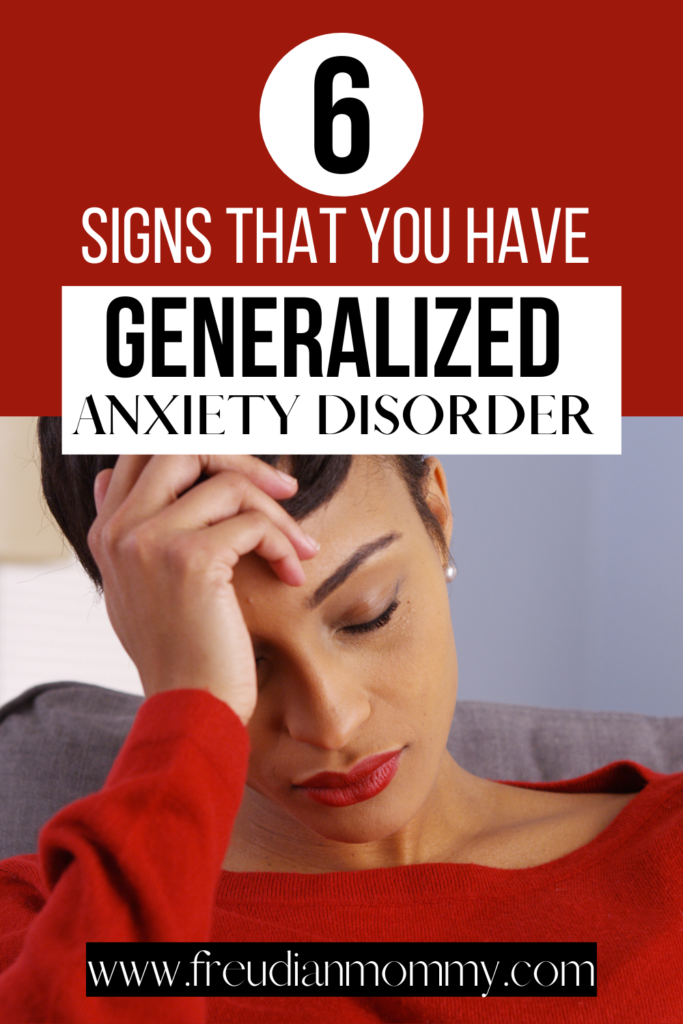
Two healthy tips when coping with Generalized Anxiety Disorder:
• Never afraid to talk with the doctor about your anxiety problem.
• If you are in therapy, be sure to stick with your treatment plan
Concluding words
The symptoms of anxiety will not go away on their own. In fact, if left untreated, your anxiety symptoms can worsen over time. That’s why it is crucial to get support from a mental health professional as soon as possible.

